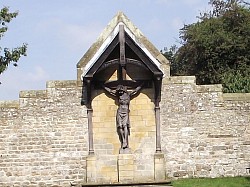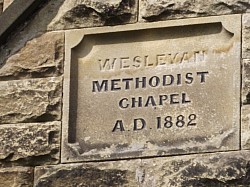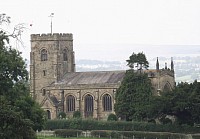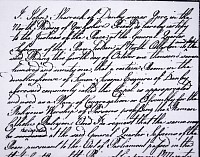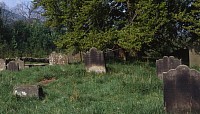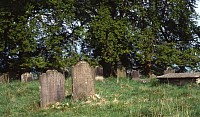Churches and Chapel
The very ancient church of St Martins in the part of East Witton called Lowthorpe, fell into disrepair and the Earl of Ailesbury built a new church on a new site. I wrote a piece about this for the East Witton parish magazine which you can read here.
click on East Witton's Churches.
The new church had a new vicar called Rev William Jones who had previously been in Wiltshire. The Earl of Ailesbury supported schools in his estate villages, and in 1826 his agent in East Witton held meetings with the parishioners and the Reverend Jones to organise a village school. Unfortunately the agent, John Claridge, and the Reverend Jones did not see eye to eye and fell out over the management of the school, whether it should be under the National scheme or a Parish School. John Claridge wrote to the Earl of Ailesbury saying that after their argument he was going to remove the stone from the building on which was carved "National School" and replace it with "East Witton School".
The next vicar in East Witton was the Reverend W Heslop. In 1838 he advertised that he would take a limited number of Young Gentlemen as scholars to teach them Classics and Mathematics to prepare them for University at 60 Guineas per annum
Just outside the parish, Danby on Ure was the seat of the Scrope family, who were Roman Catholic. This influence allowed shelter for other Catholic families in the neighbourhood in the dark days when being a Catholic meant putting yourself outside the law. The Scrope family kept their own priest , hidden of course, who ministered to a small congregation. The Catholic Record Society published the registers covering the years 1742 - 1840 for Danby on Ure. Several East Witton families are mentioned in it.
1776 10 August Jane Medcalf died suddenly at East Witton as I had no notice of her illness, she died without any help. RIP
Eventually the law allowed buildings to be registered at the Quarter Sessions for non-Anglican worship. This document is dated 1791 when John Sharrock registered a room for worship for persons professing the Roman Catholic religion. Anne Clementina Scrope, widow of Simon Scrope, built the small chapel at Ulshaw Bridge.
The very first Methodists met in Class meetings in houses. One such class was at Jervaulx led by Mr Christopher Simpson of Middleham. He met his wife at this Methodist Class, Isabella Hornby of Low Newstead. However it was a long time before the Methodists at East Witton had their own place of worship. Lord Ailesbury did not approve of Methodists, and his agent, John Claridge, threatened one of the tenants with eviction in 1815 because she allowed meetings in her house.
To Elizabeth Duckworth 27th December 1815.
I have lately been informed that there are public preachings and prayers at your house, and that travelling preachers called Methodists regularly attend. I give you notice that if any public meetings of this kind are held in the house you rent off the Earl of Ailesbury it will be my duty to compel you to quit it as it is let to you for residence and not for the purpose above mentioned ..... John Claridge
There were ten members of the East Witton Methodist class in 1795 but they had to wait until 1882 to open their own chapel .
The Parish Church of St John the Evangelist is part of the Jervaulx Group of Anglican churches and you can read about them here.
The old church yard of St Martins in Lowthorpe does not look like this now, sadly it is shoulder high in nettles and undergrowth, but sleeping beneath this still sacred space are generations of East Witton folk
Fortunately the inscriptions were recorded many years ago by the Cleveland Family History Society (which covers parts of North Yorkshire and South Durham) and you can obtain copies by contacting them .
